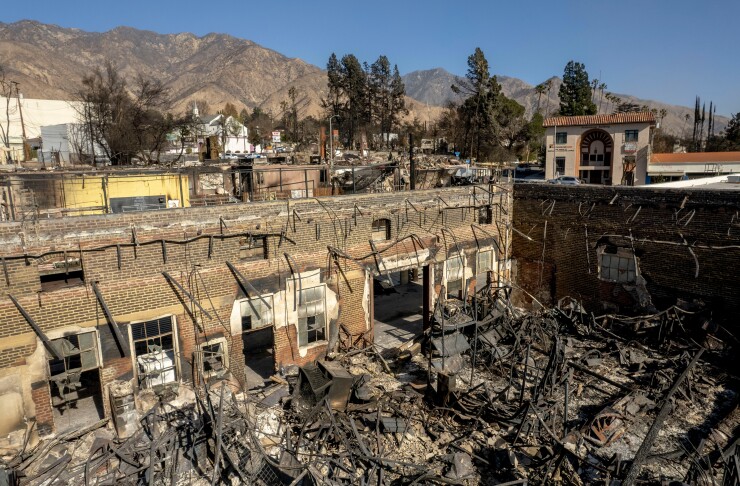(Bloomberg) --Among natural disasters, wildfires are the great unknown. Even the most-sophisticated scientific models fail to capture all the risk factors or properly account for the increasing impact of climate change.
It's a major problem for homeowners, insurers and investors, as shown by this month's Los Angeles blazes that partly or completely
While wildfire risks for the area were broadly known, what surprised almost everyone has been the ferocity of the disaster. That's when specialty analysts are supposed to fill the void by finding new ways to anticipate the threats of an increasingly unsettled world.
Wildfire risk is notoriously hard to predict because of factors such as rising temperature levels, as well as different vegetation, wind speeds and topographies. It's also one of the few natural disasters where human intervention — the use of fire retardants, for example — can materially alter the outcome.
"When an area has very little or no inherent risk, you don't need a lot of variables to assess risk levels, and the models tend to agree," said
Moody's RMS Event Response
Wildfires are "a complicated peril to model," said
In high-risk areas, models work best when there is a large amount of granular data. How close are homes to one another? Is there a "defensible space" between a structure and the surrounding area so the fire department can safely defend a structure? Are there vents through which through which wind-borne embers can enter?
Global warming adds another layer of complexity when forecasting wildfire frequency and intensity. Models have to be updated "every year or two because the climate is changing so rapidly," said
California, where wildfire risk levels are particularly high, recently
Two wildfire-risk models dominated the market between 1997 and 2020, according to Guidewire's Schwartz. Each used only three variables and the results didn't always agree, she said.
Today's risk-assessment tools, including one developed by Guidewire, incorporate a lot more variables such as wildfire history, fire-suppression capabilities and maximum annual temperature, Schwartz said.
It's not always enough. Guidewire's 2023 model included an assessment of high winds, but not hurricane-force winds. The ruinous fires that occurred that year in Hawaii provided a stark lesson. In that fire, it turned out that the wind from an offshore hurricane played a big role in reigniting fires that
"Our new wildfire model will incorporate maximum wind speeds at each location, regardless of the cause," Schwartz said.
Still, investors are skeptical whether risk modelers will ever nail down all the variables behind fires like the ones in Los Angeles.
Neuberger Berman will invest in multi-peril "cat bonds" that are issued by large insurers such as Allstate Corp., according to managing director Sophie Ware.
Still, Neuberger worries about "inadequate pricing given the known unknowns in the modeling," she said.
Listen on Zero:
To contact the author of this story:
Gautam Naik in London at






